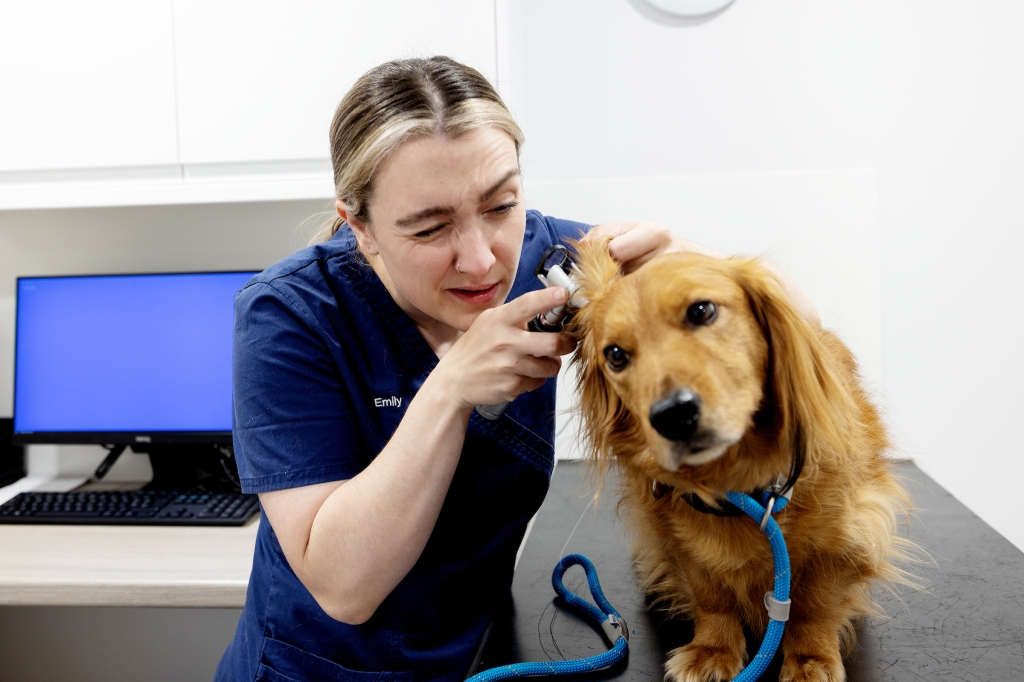
Intervention rates have jumped from 11% to 54.2% for patients having cytology as part of the diagnostic pathway
CVS Optimises Use Of Ear Cytology In Veterinary Primary Care
CVS has been running a national project since 2019 to increase the use of ear cytology and support the appropriate use of antibiotics in treating Otitis Externa (OE) in first opinion small animal practices.
Since its inception it has seen a tremendous increase in the number of patients having cytology as part of the diagnostic pathway, with intervention rates jumping from 11% to 54.2%.
Using Ear Cytology in cases of OE is beneficial. It helps to effectively identify the disease or condition, to select the right treatment, and to evaluate the response to therapy. Overall this will improve the clinical outcome for patients and will increase good antimicrobial stewardship.
In 2019, research on 26,269 CVS patients[i] nationwide by its Hub Clinical Lead (HCL) team showed that ear cytology was only being employed in 19.2% of OE cases, reflective of the industry. Only 11% of cases were being provided with in-house point-of-care cytology, with 8.2% having it performed externally. 80.8% of patients with OE were being prescribed antibiotics without cytological support, with 5% of these the highest priority critically important antibiotics (HPCIAs). This low level of cytology use in primary care was suspected to be a major contributory factor to the significant use of unnecessary antibiotics[ii].
To support its practices, CVS’ HCL team first sought to understand the barriers to performing ear cytology interventions. They were identified as; a lack of confidence in using the microscope (particularly focusing on x100 and identification of pathological events); a perceived lack of time; insufficient or poorly working equipment; a lack of access to equipment; and the perception that cytology does not change the treatment choice or outcome.
As a second step, a minimal list of cytology equipment was developed to ensure that all sites had the right kit. New equipment was then supplied to a practice if it did not meet minimum standards – following a site survey to assess provision.
To upskill both veterinary and nursing colleagues[iii], a suite of education and resource materials were then created. These focused on; equipment maintenance, cleaning and troubleshooting - to ensure its proper functioning; how to use the microscope – including x100 magnification and the slide oil immersion technique; how to identify pathological changes; and time management to get a consultation done – including swabbing, microscope analysis, diagnosis and client consultation. Developed by the HCL team in collaboration with CVS’ inhouse learning, education and development team and laboratory division, resources included new guidelines, imagery resources, video guides and face-to-face training in practices.
Each site was then provided with its own data, so that they could monitor what they were doing individually. Practice data was also supplied monthly, supporting practice teams to chart their progress.
Elizabeth McLennan Green, CVS Clinical Director for the North, said: “Ear disease is one of the most common presentations in first opinion practice. Ear cytology is a vital test that helps us to understand the underlying cause, and target therapy appropriately.
“One of our goals with this project was to minimise the number of antibiotics prescribed without associated diagnostics, and to use ear cytology to guide therapy and response to treatment for the benefit of our patients and clients.”
“We know that low ear cytology interventions are an issue across the profession. We wanted to do better. So ear cytology has been our first and longest running clinical improvement project. We’re thrilled with the brilliant results our colleagues are now achieving.”
CVS Group operates across small animal, farm animal, equine, laboratories and crematoria, with over 500 veterinary practices and referral centres in the UK, the Republic of Ireland and the Netherlands. In the last five years the company has invested nearly £80 million in its sites, facilities and equipment, in addition to industry leading training and support, to give the best possible care to animals.
[i] August to October 2019
[ii] Given as part of multi-use polypharmacy treatments (a combined antibiotic, fungal and steroid treatment)
[iii] Depending on the site set up, ear cytology has the potential to be a nurse-led procedure
More from CVS UK Ltd
- Precise imaging and unconventional fixation resolve challenging tarsal fracture
- CVS Farm Vets launches innovative Sheep Lameness Project to support UK farmers
- New 'CVS Vets' brand is launched at Broadleaf
- New study reveals key prognostic indicators in canine mast cell tumours
- Ernie’s ball trouble: Managing a challenging oesophageal foreign body

 2 years ago
2 years ago  1052 views
1052 views
